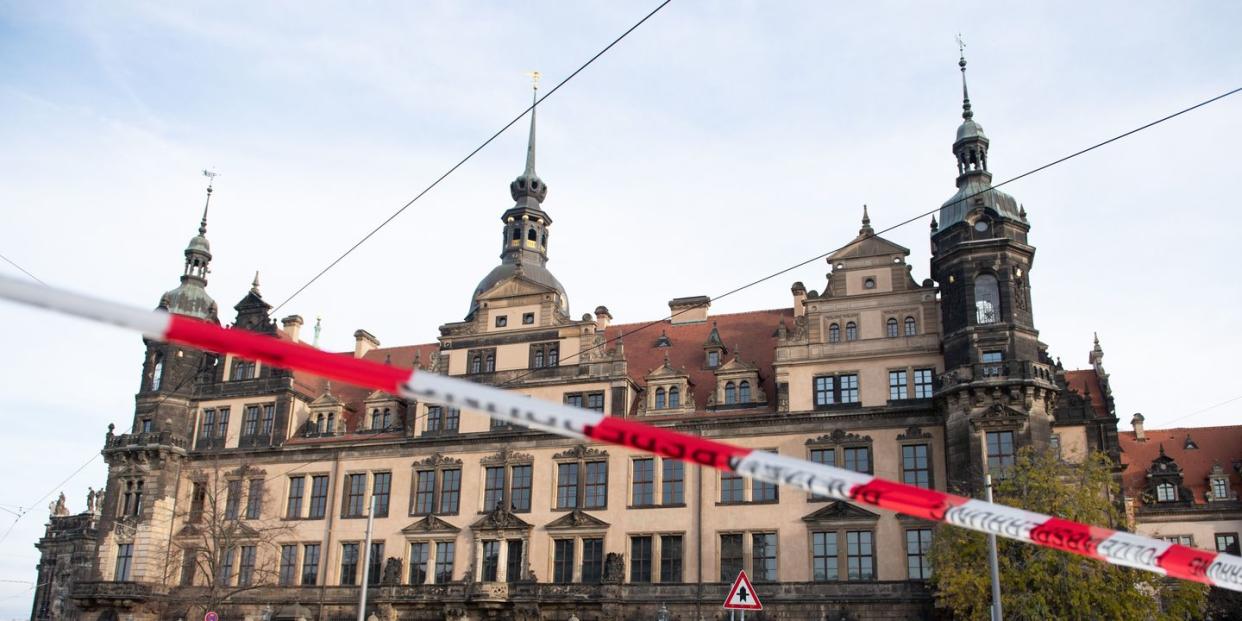Remember That Time Thieves in Germany Stole 1 Billion Euros Worth of Art and Jewelry From a Museum?

Thieves in Dresden, Germany have stolen 1 billion Euros worth of art and jewelry from a museum.
The robbery is an opportunity for the museum and others around the world to audit and improve security on priceless collections.
Other factors, like easy access to highways, are universal factors with which everyone must contend.
A carefully planned and targeted robbery has left a Dresden museum with up to 1 billion Euros in missing jewelry and cultural artifacts, The Guardian reports—the biggest heist of its kind since World War II. The Grünes Gewölbe (Green Vault) at Dresden’s Royal Palace houses some of Europe’s rarest treasures, including a 547.71-carat sapphire from Tsar Peter I of Russia.
The thieves, who at press time are still on the run, identified several weaknesses that made the museum a good target. First, the museum’s alarm system turned off when a nearby fire caused an electrical outage. This is why your $12 portable radio from Walgreens has both a plug and a battery port, and why FEMA even recommends having a radio with a hand crank. Without a generator or other backup plan, an electrical alarm system is vulnerable to a targeted attack.
The museum’s surveillance cameras still operated through the outage, which means someone at the facility considered backups important—they just didn’t implement them on all systems. Honestly, it seems better to prevent a theft in progress than to watch the thieves on tape afterward, which is what happened this time.
Without an active alarm system, a museum with breakable windows and fences is just a sitting duck. Especially when the museum itself is closed, there’s no reason not to protect priceless national treasures with the installation of some pulldown security gates and theft-repellent windows—threaded with wire mesh, subtly enclosed with bars, or made of heavy glass blocks that are much harder to break through. The thieves in Dresden chose a window large enough for a human to get through that opened almost directly into the jewelry area they wanted to target.
The Guardian reports the museum itself is situated near the autobahn, making it easy and fast to get out of Dodge after a major robbery. Studies have shown that locations with more highway exits are more likely to experience crime, specifically robberies. Imagine committing a crime during rush hour on a surface street in a U.S. city—your so-called getaway could go two miles per hour and overheat your car as you idled in standstill traffic. There’s not much anyone can do about avoiding this crime incentive, because the same reasons criminals love highways are the reasons law-abiding people often do as well.
Officials at the Dresden museum have a major worry beyond the burglary itself: What happens if the thieves don’t try to fence the stolen jewels and artifacts, but instead choose to melt them down for precious metals and gemstones? Our understanding of what stolen goods can be sold on the black market has also been distorted by the dark web, which is more famous for the availability of drugs and even fake goods, but is an untraceable place to fence priceless things. The world is also still full of plutocrats or dictators who love to accumulate precious items it’s not legal to own.
That said, experts still say most stolen art in particular, if it’s noteworthy like the Dresden robbery and makes international news, becomes almost impossible to sell because of its high profile. Even real-life Bond villains are hesitant to buy something they’ve seen on the news, especially because there are so few guarantees or safeguards on the black market. The art could be faked to capitalize on the news, or the seller could just be a cop trying to catch an illegal collector. Hopefully German police will catch the thieves and render these questions moot.
You Might Also Like

